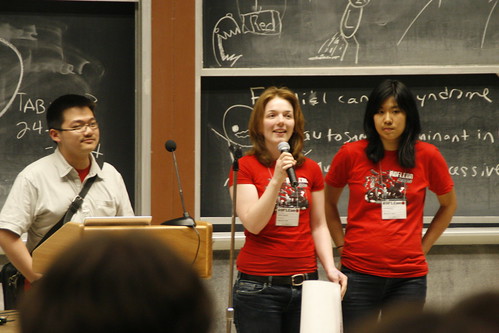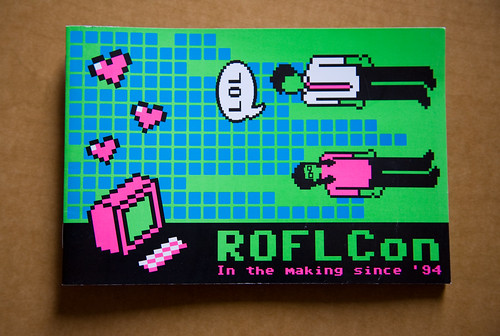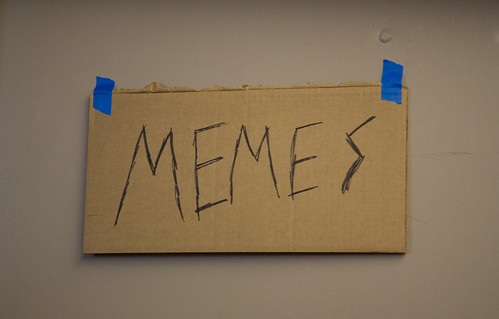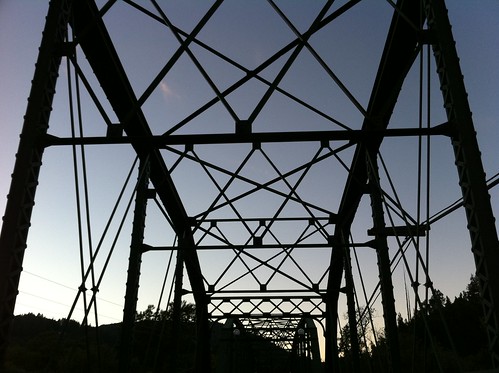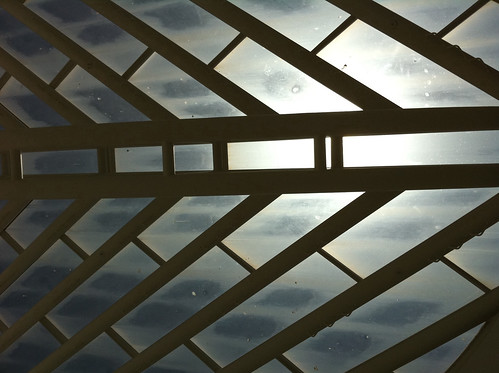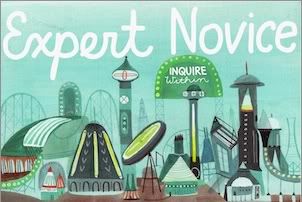At dawn on September 18, 1895, the city of Atlanta stirred. Cool breezes meandered through town as late summer sunshine beamed down from a cloudless sky. Six a.m. brought the moment everyone had been waiting for: at last, the gates of the Cotton States and International Exposition were thrown ajar.
Above Piedmont Park, “[f]rom the tops of 347 flag staffs on the buildings around the grounds floated pennants and flags of the nations of the earth.” The main entrance at 14th Street led into a compact world, which in a bird’s-eye view appeared oblong and elliptical. The main green was flanked by the Georgia building and the Auditorium. To the left lay the Agricultural building, the Mexican Village, Lake Clara Meer, and the Midway; to the right, the Fine Art and Manufactures buildings. The morning trains brought a “great crush” of travelers, the latest influx in a series of locomotive arrivals that had already brought tens of thousands of guests into town. Bicycle messengers careened through the streets, each with a “pencil in…mouth and book in hand, splitting the wind at a 2:40 gait.” Down on the grounds, programme boys in crimson outfits, “silhouetted against the prevailing background of white and gray,” presented “a spectacle that simply ravage[d] the eye.” Greeting every visitor “the instant he passes through the turnstile,” the boys darted back and forth between the buildings crowned by foreign flags undulating in the breeze.
Journalists were among the first to push their way through the turnstiles. On the eve of the exposition, the
Columbus Daily Enquirer-Sun observed that Atlanta was “full of newspaper men from all parts of the world,” including representatives from the
New York World, the
San Francisco Chronicle, the
Washington Post, and “correspondents from scores of papers in other cities of this and other countries.” One such journalist, Bertha Damaris Knobe, edited the women’s department of the
Chicago Tribune. According to an onlooker, her beautiful grey eyes and aquiline nose looked very well above her matching shirt and coat “of brown English cloth,” its fit and finish showing “the touch of a good tailor”; a “little Napoleon hat of black braided straw went along to complete the smart costume.” That very day, the
Tribune published a preliminary review of the affair: “This exposition, the accomplishment of Southern enterprise, genius, capital, and labor, is worthy of the Southern people and an institution of which all Americans justly feel a pride.” News traveled quickly, and was manufactured early; the newspaper men and women who crowded the grounds made sure of that.
Once through the gates, the 30,000 opening-day spectators confronted a half-finished masterpiece. Even a week earlier, the situation had been quite dire: the avenues of the grounds had been “bare and unsightly” until covered with “a paving of limestone and crushed blue stone.” Though only a fraction of the exhibits had arrived, few of the opening day visitors complained loudly. The exhibits would all be in place by October, they assured themselves, and besides—the inaugural spectators had not come to be edified. They were there to look at the broad sweep, to bask in the sun and energy: to witness a moment.
Elsewhere, in the center of the city, the Fifth Regiment of Georgia Volunteers and twenty-four other military companies gathered in the early morning light. At noon, the soldiers assembled around the intersection of Broad and Marietta streets, flanked by the Estey Organ Company and a local business school. Meanwhile, at the tony Kimball hotel, “a rare congregation of women”—ladies of “highest social standing” and “literary fame” among them—gathered in the hotel’s parlors under foreign flags, hung in honor of the fair. Outside the establishment, carriages and tallyhos waited; the ladies boarded, “bedecked in the latest styles,” as their vehicles “fell in line with the long procession.” At one o’clock, the parade began. The soldiers marched “through an immense throng of people,” along Marietta and past the opera house, down Forsyth, across the Western and Atlantic railroad, and then circled back, past cabinet shops, perfumers, banks, and hotels. Their compact tour of the city’s commercial center complete, the troops looped back to Marietta Street, turned, and from there began the three-mile march to Piedmont Park, where the day’s revelries would take place. As they approached the exposition grounds, the military companies slowed and came to a halt, allowing exposition officials to pass into the grounds ahead of them. Finally, the troops marched in, paused at the plaza, and “were then taken to Sheriff Callaway’s barbecue stand, where they were the guests of the exposition for a short while.”
As the afternoon advanced, the warm air became sweltering, “threaten[ing] to pass the limit of comfort,” but “the buoyant crowds on the street did not seem to mind the temperature and good humor reigned supreme.” Meanwhile, the Exposition’s guests and directors filed into a brand-new auditorium. By 3:30, “the hall was packed to suffocation, 3,500 people being present.” As the crowd milled and bustled, Victor Herbert conducted a new and original musical number, “Salute to Atlanta.” Rufus Bullock, Georgia’s former governor, presided; his first task as master of ceremonies was to introduce Colonel Albert Howell.
Howell stepped to the front of the stage, paused; exhaled. In his hands, he held the words of Frank L. Stanton, a poet and frequent contributor to the Atlanta Constitution, one of the city’s main newspapers. Sonorously, Howell began to recite the dedicatory ode.
Behold today the meeting of the lands
In pride and splendor: from far foreign strands
Great state with state clasps hands!
Here, on this southern soil, supreme and free,
Meet now no hostile bands;
But all flags wave where one of Liberty
Shakes stars down like the sands!
And from sky-cleaving towers
Time strikes the thrilling hours
Of golden promise for the years to be!
...
Here, though a city opens wide her gates
This is no day of cities, but of States
Supreme and crowned with progress! Here all
Time
Gathers its glories in the Georgian clime
And sea to sea replies
And from the farthest skies
The answering bells in one glad chorus chime:
“No North, no South—but a vast world sublime!”
At the words “a vast world sublime!” cheers erupted from the audience of thousands. The applause and cheers were so deafening that “several minutes elapsed before the Chairman could introduce the next speaker.” Having lifted his city and the audience’s spirits to majestic heights, Howell stepped from center stage and gestured to President Collier, of the Exposition Company, to take his place.
Collier, Mrs. Joseph Thompson, and Booker T. Washington spoke in quick succession. At this point, the heat and bluster were beginning to tax the audience; the
Memphis Commercial Appeal would later remark of the oratory that “[t]his thing of making speeches every time you cut a watermelon ha[d] grown a trifle monotonous.” But one oration yet remained, and though the audience shuffled in their seats, they rallied the patience to sit through one more. Taking the stage, Judge Speer began, “Who can doubt the educational effects of such proofs of human advancement as this exposition? A lad can walk through these halls and acquire knowledge of which Sir Isaac Newton or Sir Francis Bacon were ignorant. He may behold dainty products from all lands, for which Lucillus might have sighed in vain…”
But even as Judge Speer extolled the edifying effects of the exposition, boasting of its broad view of the world, he issued a note of warning to foreign nations. The South stood strong: despite its crippling loss in the Civil War thirty years before, the section had risen once again, and was prepared to support the Union with fierce loyalty and matchless vigor. “Let no military staff or other nations,” Speer concluded, “when it is taking into account the military power of this American Union, fail to estimate the full fighting strength of the men who wore the gray and the sons of their blood.” As these chilling words reverberated through the auditorium, the ceremony came to a humid close. The audience gathered their belongings and made their way across the lawn to Machinery Hall, where the final spectacle of the day would take place.
At Machinery Hall, the engineer Charles Foster and his assistants stood waiting, next to the Frick engine and the four-million-gallon pump. The ceremonies had run late, and so Foster had been sitting by the engine, head close to the electric valve, for half an hour. Earlier, workmen had strung a wire from Machinery Hall to Gray Gables—the summer residence of President Grover Cleveland, in Buzzard’s Bay, Massachusetts—and installed a gold-rimmed button in Cleveland’s home. In Atlanta, the crowds gathered around the banks of the exposition’s artificial lake, Clara Meer; an operator sent the signal to Buzzard’s Bay. When Cleveland pressed the button, electricity would pulse across the wire. The charge would open a small valve in the Frick engine, forcing a jet of steam against a larger one, powering the cylinders of the giant machine. The wheels would begin to turn, and the show would officially open. But for the moment, the crowd only waited. The day was not yet done.
* * *
Measured against other world’s fairs of its day, Atlanta's 1895 Cotton States and International Exposition was small. Between opening day and the exposition’s close on December 31, just over one million spectators made their way to Piedmont Park’s two hundred rolling acres. Only two years after Chicago’s 1893 World's Fair had welcomed over 27 million visitors to its six-month extravaganza, Atlanta's attempt paled in comparison. And yet, the exposition’s organizers were aiming for more than just success by the numbers. They saw the opportunity to make a name for themselves, and they intended to seize it.
That intention is the subject of this thesis. At the turn of the twentieth century, Atlanta’s wealthy white businessmen banded together to pursue global ambitions. Holding an international exposition would position the city alongside fellow world’s fair metropolises such as New York, Paris, and Chicago. Realizing that their city’s reputation was at stake, these businessmen invited even unfavorable comparisons to previous expositions—Chicago’s, in particular—in order to be mentioned in the same breath and judged by the same standards. These men wanted nothing more than to put Atlanta on the world map. They would accept nothing less.
Comprising an elite group of bankers, industrialists, politicians, merchants, and newspapermen, characters such as Charles Collier and Rufus Bullock embodied the spirit of a place they insisted on calling the New South. A rhetorical invention, the idea of the “New South” itself represented aspiration more accurately than reality: in 1895, thirty years after the close of the Civil War, the former Confederacy’s transition to an industrial economy from an agricultural one was not only not over; it had hardly begun. Atlanta, as an industrial center and railroad hub, was one of the few economic bright spots in an otherwise bleak landscape. And in the 1890s, amidst nationwide depression, even the relative promise of Atlanta fell short of expectations.
The difference lay in the expectations themselves: in Atlanta, stakeholders and enthusiastic boosters labored tirelessly to keep them high. The city’s energy was so pervasive and persistent that visitors could not help but find it worthy of exclamation. “Atlanta,” wrote W. J. Lampton for the
New York Sun in anticipation of the exposition, “is the best town in the south, present and future…She doesn’t wait for other people to come along and reap the advantages, but she buckles right to herself, and the result is—well, it is Atlanta, the Imperial City of the Empire State of the South, the City of Unceasing Endeavor, the City of Get There, the City of Atlanta.” Lampton’s words acted simultaneously as evaluation and challenge: though it might be the Imperial City of the Empire State of the South, Atlanta and her stakeholders had a way to go before becoming an imperial metropolis not “of the South,” but on the world stage.
The world stage was precisely where Atlanta’s businessmen envisioned their future would unfold. As heavy investors in Atlanta’s streetcars, mills, newspapers, and commercial establishments, they each cultivated “more than a rhetorical stake” in the city’s prosperity. With the world order destabilized by widespread war and the economic upheaval of decades of depression and industrialization, and with technology advancing at a tremendous clip, predicting the future seemed all but impossible. So, instead of predicting the future, Atlanta’s businessmen decided to build it. On a dizzying array of fronts—including industrialization, race relations, and the cultivation of international trade—they raced to get ahead, unsure of which arenas would prove most important and so improving them all. The 1895 Cotton States and International Exposition would provide an excuse to court international partners in trade, put sectional reconciliation on display, and stage a hundred-day press event. Its most significant role, though, would be simply to mark Atlanta as a place where extraordinary things could happen: and did happen, every day.
Progress, in historical writing as in civic improvement, requires periodic reinterpretations of the past. Most accounts of the 1895 Cotton States and International Exposition have examined the fair in comparative frameworks, aligning it with other Southern world’s fairs of the period or with other arenas of cultural and economic production. Yet comparative perspectives obscure as much as they illuminate: by lumping Southern spectacles together, they treat Atlanta’s 1895 event as emblematic of the South, rather than as a unique outgrowth of specific contingencies. The historical record suggests another line of analysis entirely: that Atlanta’s businessmen and boosters wished to set Atlanta apart from the South; in fact, to transcend state, section, and nation entirely. These individuals wanted to put Atlanta up for consideration on its own terms. In order to control those terms, the city’s wealthy white businessmen built a regulated environment, a careful diorama: an exposition. This city within a city would also be a world within a world. The exposition would present Atlanta as an oasis of progress, a gateway to the future, detaching it from geographical and historical inertia entirely.
This is the story, then, of the stories these men told themselves, and of the façade they built to seduce the world. Considering newspapers as records of power enacted through persuasive rhetoric rather than as artifacts of objective reporting, this thesis will assemble a narrative history of the 1895 Cotton States and International Exposition. By triangulating evidence found in newspaper articles published across Georgia and in major U.S. cities, it will endeavor to evaluate the exposition on its own terms, and to place those terms in perspective. The evaluative frameworks preferred and advanced by Atlanta’s postwar elite, of course, must be considered with a healthy suspicion. If viewed carefully, though, the aspirations expressed by these figures illuminate the motivating forces behind an ambitious age. This thesis will, to borrow a phrase from Barbara Fields, take these men and their words seriously, without taking them literally.
Between September 18 and December 31, 1895, the Atlanta Exposition teemed with lived experience. Every day, visitors from near and far entered the gates of the exposition; every day, workers arrived early and set the illusion in motion again. Their stories overlapped and collided as they navigated the built landscape of the fair. But the exposition itself was underwritten by years of careful planning and positioning. The built environment of the exposition was only the peak expression in a succession of manipulations. Expositions, after all, expose intentions. Atlanta exposed hers the moment she left her gates ajar.
